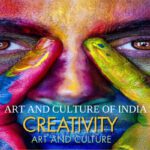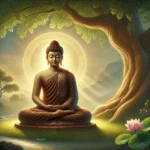India, a land of rich traditions and diverse heritage, is renowned for its vibrant art and culture that reflect the country’s historical evolution, geographical diversity, and spiritual philosophies. With its myriad art forms, languages, festivals, and customs, India offers a unique cultural experience that captivates the hearts and minds of people around the world.
The Historical Context
India’s art and culture have been shaped by centuries of history, influenced by various civilizations, religions, and rulers. From the ancient Indus Valley Civilization to the Mughal Empire, each era has contributed significantly to the country’s cultural landscape. This historical amalgamation is evident in India’s architecture, music, dance, and visual arts.
Traditional Art Forms
- Visual Arts: India boasts a wealth of traditional painting styles, each with its own distinct technique and narrative. Some notable forms include:
- Madhubani: Originating from Bihar, this folk art is characterized by intricate patterns and vibrant colors, often depicting mythology and nature.
- Warli: A tribal art form from Maharashtra, Warli paintings use simple geometric shapes to depict daily life, animals, and nature.
- Pattachitra: A traditional cloth-based painting from Odisha, featuring mythological narratives and intricate detailing.
- Crafts: Indian crafts are diverse, showcasing skilled artisanship. Some popular crafts include:
- Pottery: From earthen pots to decorative ceramics, pottery has deep cultural roots in India, varying by region.
- Textiles: India is famous for its textiles, including silk, cotton, and wool, with each region boasting unique weaving techniques such as Banarasi, Kanchipuram, and Pashmina.
- Jewelry: Traditional jewelry reflects regional aesthetics, with intricate designs and craftsmanship in gold, silver, and precious stones.
Performing Arts
Dance: India is home to a variety of classical dance forms, each with its unique style, music, and storytelling. Some prominent forms include:
- Bharatanatyam: Originating from Tamil Nadu, this dance form combines expressive hand gestures, facial expressions, and intricate footwork.
- Kathak: With roots in North India, Kathak is known for its graceful movements, storytelling, and use of fast footwork.
- Odissi: A classical dance from Odisha, characterized by its fluid movements and sculpturesque poses, often telling tales from Hindu mythology.
- 7 Unique Ways to Savor Onam’s Special Traditions

- Angkor Wat – The Largest Hindu-Buddhist Temple in the World

- Art and Culture of India: A Tapestry of Diversity

- Baisakhi: The Sikh Festival of Unity and Equality

- Buddhism : the prominent religion in the world

Music: Indian music encompasses a wide range of genres, from classical to folk to contemporary. Key genres include:
- Hindustani and Carnatic Music: The two major classical music traditions in India, each with its own unique instruments, styles, and compositions.
- Folk Music: Each region has its own folk traditions, reflecting local culture, festivals, and daily life, such as Bhangra from Punjab and Lavani from Maharashtra.
- Bollywood Music: The film industry has popularized various music styles, blending traditional and modern influences, and is a significant part of contemporary Indian culture.
Festivals and Celebrations
Indian culture is synonymous with its festivals, celebrated with great fervor and enthusiasm. Some prominent festivals include:
- Diwali: The festival of lights, symbolizing the victory of light over darkness and good over evil.
- Holi: The festival of colors, celebrated with joy and enthusiasm, marking the arrival of spring.
- Eid: Celebrated by the Muslim community, it emphasizes togetherness, charity, and feasting.
These festivals are an expression of India’s cultural diversity, where different religions and communities come together to celebrate.
Conclusion
In celebrating India’s art and culture, we embrace the beauty of diversity and the universal themes that connect us all. Whether through music, dance, or visual arts, India continues to inspire and captivate people around the world, making it a treasure trove of artistic expression.






